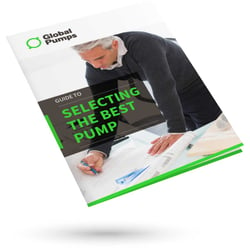Throughout mining operations, slurry pumps are critical in the effective transport of slurry across the plant. Their running costs are a significant component of the total lifecycle costs, estimated to be around 32%. Therefore, any failure to your slurry pump can bring your project to a grinding halt.

Although slurry pumps are imperative facets of mine sites, it is relatively common to find pumps operating inefficiently, or in ways that reduce the lifespan of the equipment. Improving the efficiency of your slurry pump not only requires the correct specification and selection of the pump, but also to ensure they are operated correctly over the long term.
How to handle slurry in a demanding application
These pumps are required to transport large quantities of slurry, which is composed of minerals and particles suspended in fluid, to a mineral extraction process plant. Slurry pumps must therefore be able to handle the abrasive solids in the slurry, and in some instances, corrosive fluids.
Slurry pumps are usually operated 24/7, which can often result in reduced wear life of wetted components if they are not suitable for the specific application. Any failure of inefficiency in slurry pumping can have significant repercussions for the entire plant and project, which in turn affects the overall profitability of the mining operations.
To optimise the efficiency of your slurry pump, it is recommended to:
- Specify and select the right pump and other equipment with your application in mind. Our team share their advice on selecting a slurry pump in this blog.
- Ensure the pump is operating at its best efficiency point (BEP) flow rate.
- Regular monitoring and maintenance to prevent any unplanned outages, declining performance or inefficiencies.
Centrifugal pumps as slurry pumps?
Centrifugal pumps are common on mine sites, as these pumps can handle solid particle sizes from microscopic sizes to large rocks.
For most centrifugal slurry pumps, the casings can be both unlined or lined, with internal replaceable liners - in most instances these are the impellers, volutes and liners. You can find out more about the Slurrypro slurry pumps here.
Positive displacement pumps as slurry pumps?
Positive displacement pumps are often used on mine sites for pumping through very long pipelines, as they can generate high pressures – more so than the abilities of multistage centrifugal pumps. In most instances, positive displacement pumps are installed when transporting slurries with high concentrations of fine particles.
When it comes to selecting a slurry pump, there are critical parameters that need to be considered in the slurry itself:
- The particle size, shape (angular, round, long and stringy) and hardness
- Corrosiveness
- Chemical compatibility with elastomers
- Solids concentration
- Likelihood of it running dry
Optimising performance to maximise profitability
To maximise the efficiency, you need to determine the requirements of a given slurry pumping application, and select and pump for that specific job, ensuring the pump is operated as close to its BEP as possible. Over the pumps lifetime, it is important you consider smart monitoring and continual maintenance to sustain the efficiency.
Want to learn more?
Get in touch with Global Pumps! Our team are experts in mining and mineral processing applications. We understand the demand of the industry and need for durable, reliable slurry pumping options. Having worked with leading mine sites across the world, our team can advise of best practice to ensure long-term site success.

